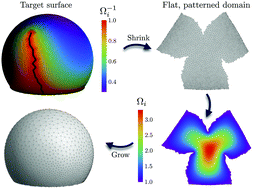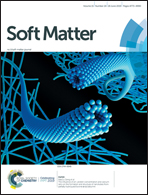Distortion-controlled isotropic swelling: numerical study of free boundary swelling patterns
Abstract
Modern fabrication tools have now provided a number of platforms for designing flat sheets that, by virtue of their nonuniform growth, can buckle and fold into target three-dimensional structures. Theoretically, there is an infinitude of growth patterns that can produce the same shape, yet almost nothing is understood about which of these many growth patterns is optimal from the point of view of experiment, and few can even be realized at all. Here, we ask the question: what is the optimal way to design isotropic growth patterns for a given target shape? We propose a computational algorithm to produce optimal growth patterns by introducing cuts into the target surfaces. Within this framework, we propose that the patterns requiring the fewest or shortest cuts produce the best approximations to the target shape at finite thickness. The results are tested by simulation on spherical surfaces, and new challenges are highlighted for surfaces with both positive and negative Gaussian curvatures.



 Please wait while we load your content...
Please wait while we load your content...
